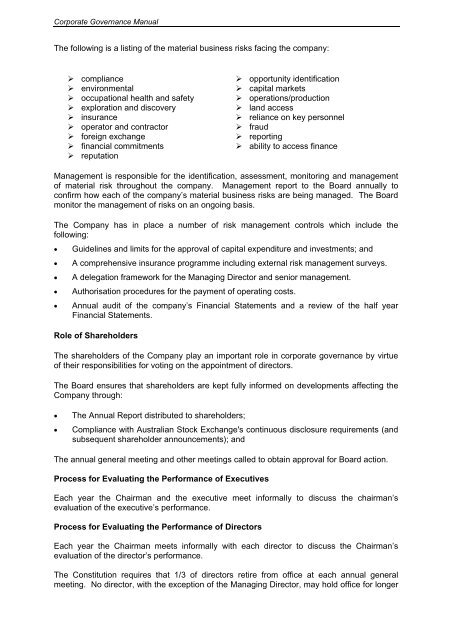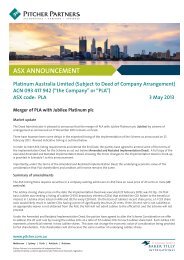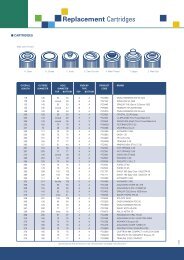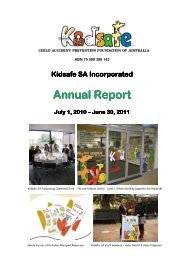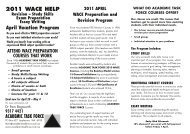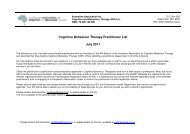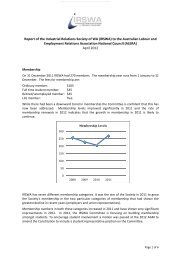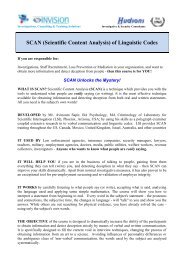CORPORATE GOVERNANCE MANUAL
CORPORATE GOVERNANCE MANUAL
CORPORATE GOVERNANCE MANUAL
You also want an ePaper? Increase the reach of your titles
YUMPU automatically turns print PDFs into web optimized ePapers that Google loves.
Corporate Governance Manual<br />
The following is a listing of the material business risks facing the company:<br />
‣ compliance<br />
‣ environmental<br />
‣ occupational health and safety<br />
‣ exploration and discovery<br />
‣ insurance<br />
‣ operator and contractor<br />
‣ foreign exchange<br />
‣ financial commitments<br />
‣ reputation<br />
‣ opportunity identification<br />
‣ capital markets<br />
‣ operations/production<br />
‣ land access<br />
‣ reliance on key personnel<br />
‣ fraud<br />
‣ reporting<br />
‣ ability to access finance<br />
Management is responsible for the identification, assessment, monitoring and management<br />
of material risk throughout the company. Management report to the Board annually to<br />
confirm how each of the company’s material business risks are being managed. The Board<br />
monitor the management of risks on an ongoing basis.<br />
The Company has in place a number of risk management controls which include the<br />
following:<br />
• Guidelines and limits for the approval of capital expenditure and investments; and<br />
• A comprehensive insurance programme including external risk management surveys.<br />
• A delegation framework for the Managing Director and senior management.<br />
• Authorisation procedures for the payment of operating costs.<br />
• Annual audit of the company’s Financial Statements and a review of the half year<br />
Financial Statements.<br />
Role of Shareholders<br />
The shareholders of the Company play an important role in corporate governance by virtue<br />
of their responsibilities for voting on the appointment of directors.<br />
The Board ensures that shareholders are kept fully informed on developments affecting the<br />
Company through:<br />
• The Annual Report distributed to shareholders;<br />
• Compliance with Australian Stock Exchange's continuous disclosure requirements (and<br />
subsequent shareholder announcements); and<br />
The annual general meeting and other meetings called to obtain approval for Board action.<br />
Process for Evaluating the Performance of Executives<br />
Each year the Chairman and the executive meet informally to discuss the chairman’s<br />
evaluation of the executive’s performance.<br />
Process for Evaluating the Performance of Directors<br />
Each year the Chairman meets informally with each director to discuss the Chairman’s<br />
evaluation of the director’s performance.<br />
The Constitution requires that 1/3 of directors retire from office at each annual general<br />
meeting. No director, with the exception of the Managing Director, may hold office for longer


